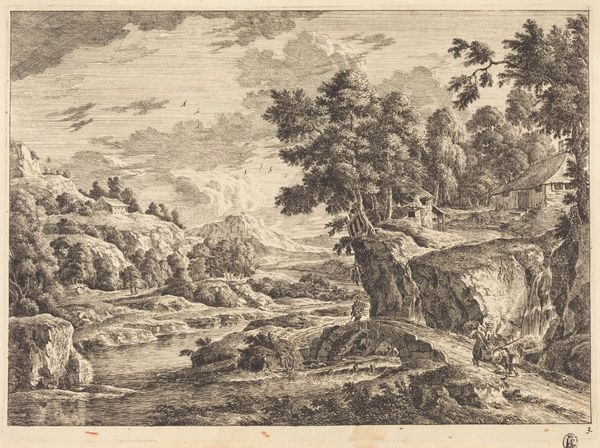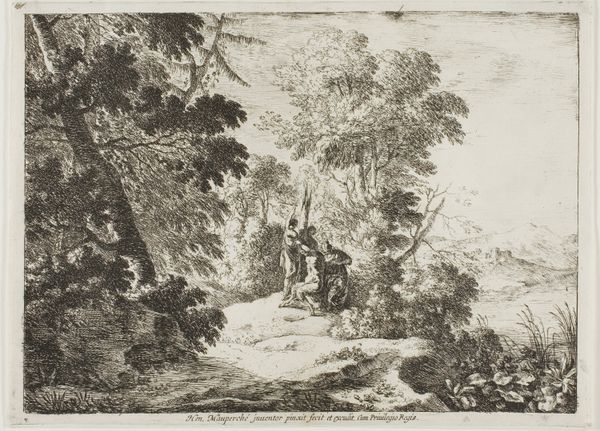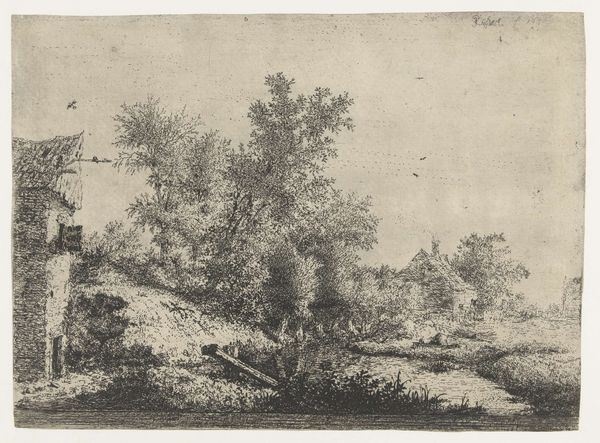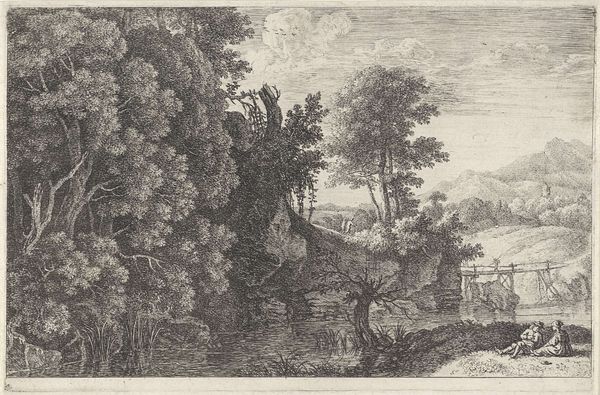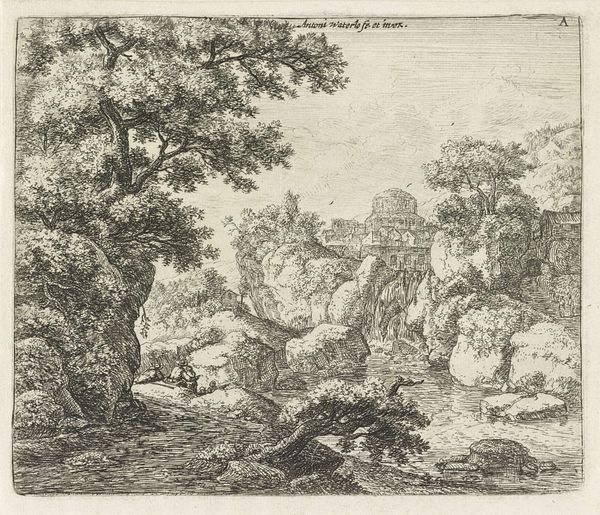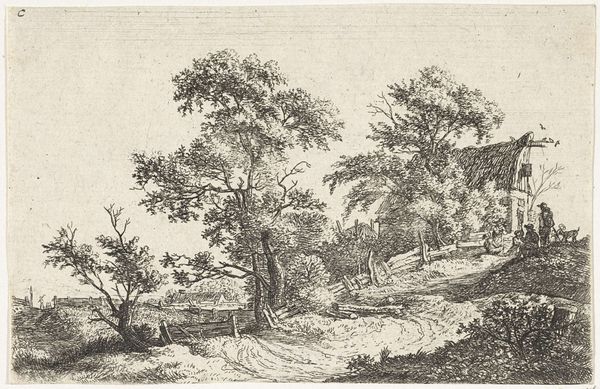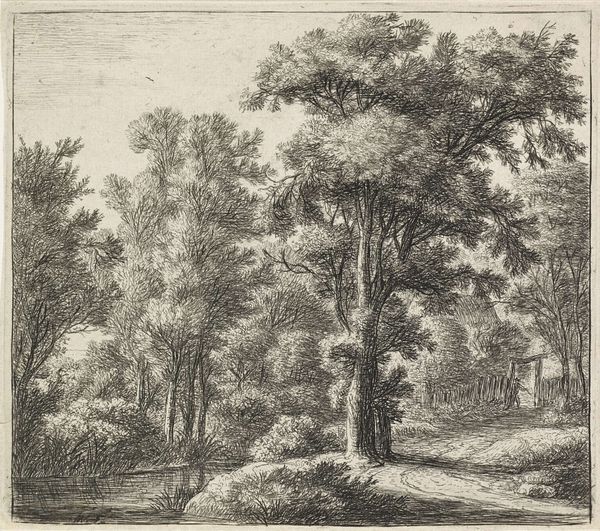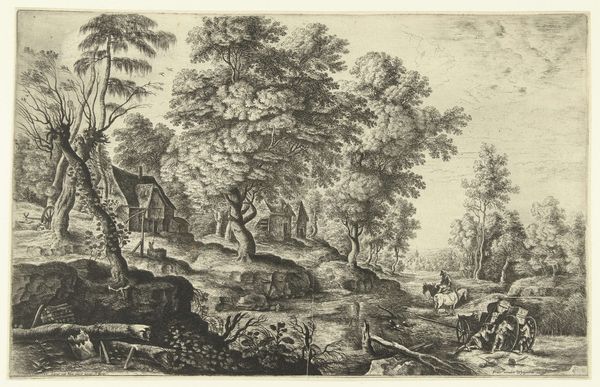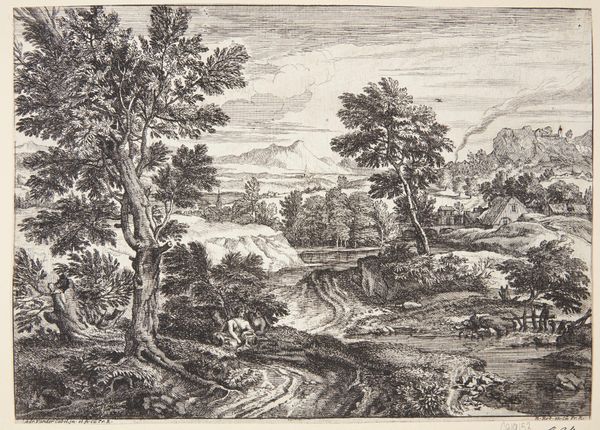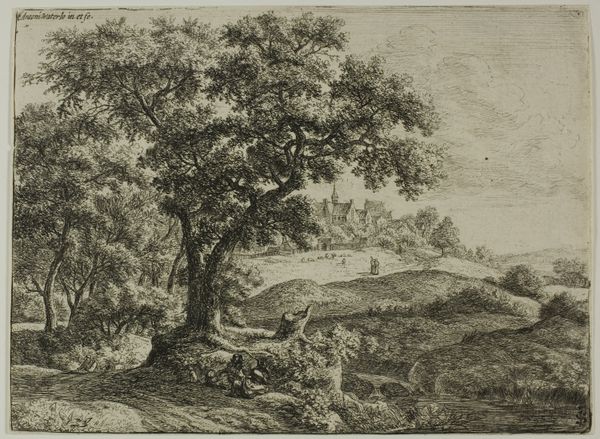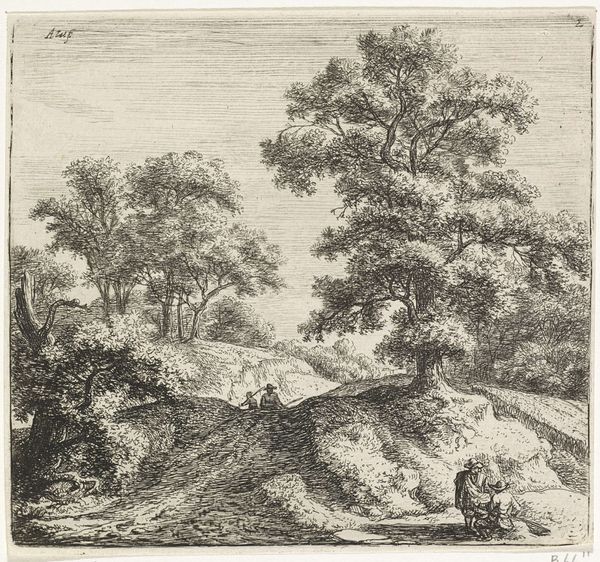
print, etching
#
baroque
#
dutch-golden-age
# print
#
etching
#
landscape
#
figuration
#
genre-painting
#
realism
Dimensions: height 140 mm, width 179 mm
Copyright: Rijks Museum: Open Domain
Curator: Welcome. We’re looking at Karel du Jardin’s "Landschap met herder en drie koeien," created around 1660. It’s an etching, showcasing a pastoral scene characteristic of the Dutch Golden Age. Editor: My initial reaction? A deep sense of calm. The composition is so balanced, almost meticulously arranged to convey serenity. It's a controlled vision of rural life. Curator: Precisely. Du Jardin uses etching to great effect here. Note the variation in line weight – thicker lines to define the rock face on the left, finer lines for the foliage and distant hills. This contrast creates depth and texture. Editor: But is it depth, or is it deliberate contrast reinforcing the socio-economic hierarchy of the time? The well-defined rock face, possibly symbolizing permanence and power, juxtaposed with the almost indistinct figures of the shepherd and cattle… Are they merely picturesque elements, or subtle commentary on land ownership? Curator: An interesting interpretation. Certainly, Dutch landscape painting of this era was often intertwined with ideas of national identity and prosperity. The cows, for instance, could be seen as symbols of wealth and agricultural success. Editor: Yes, and symbols deeply rooted in exploitation. The landscape isn't just a pretty backdrop; it's the site of labor. Where are the traces of that labor represented here? Perhaps in its idealized form, we’re meant to overlook that inherent power imbalance. Curator: That's a fair point. The idyll could mask a more complex reality. However, from a purely formal standpoint, the artist demonstrates masterful control of light and shadow. The etching technique lends itself beautifully to capturing the nuances of natural light filtering through the trees. Editor: Absolutely, technically brilliant. But let’s not allow technical brilliance to sanitize history. Looking at art through a contemporary lens requires we question what is absent, what narratives are intentionally softened or erased to serve dominant ideologies. Even landscape isn't neutral. Curator: A powerful reminder to look beyond the surface. Thank you for bringing that perspective. Editor: Thank you. Art, after all, is not created in a vacuum.
Comments
No comments
Be the first to comment and join the conversation on the ultimate creative platform.
